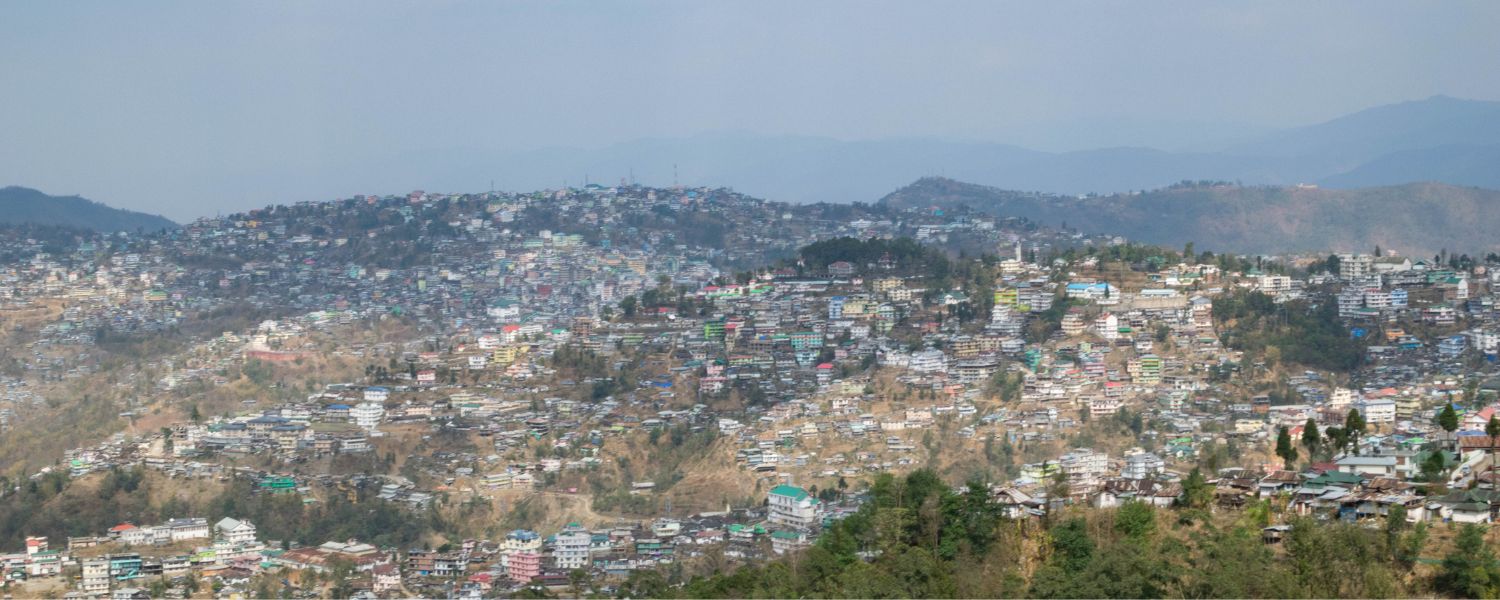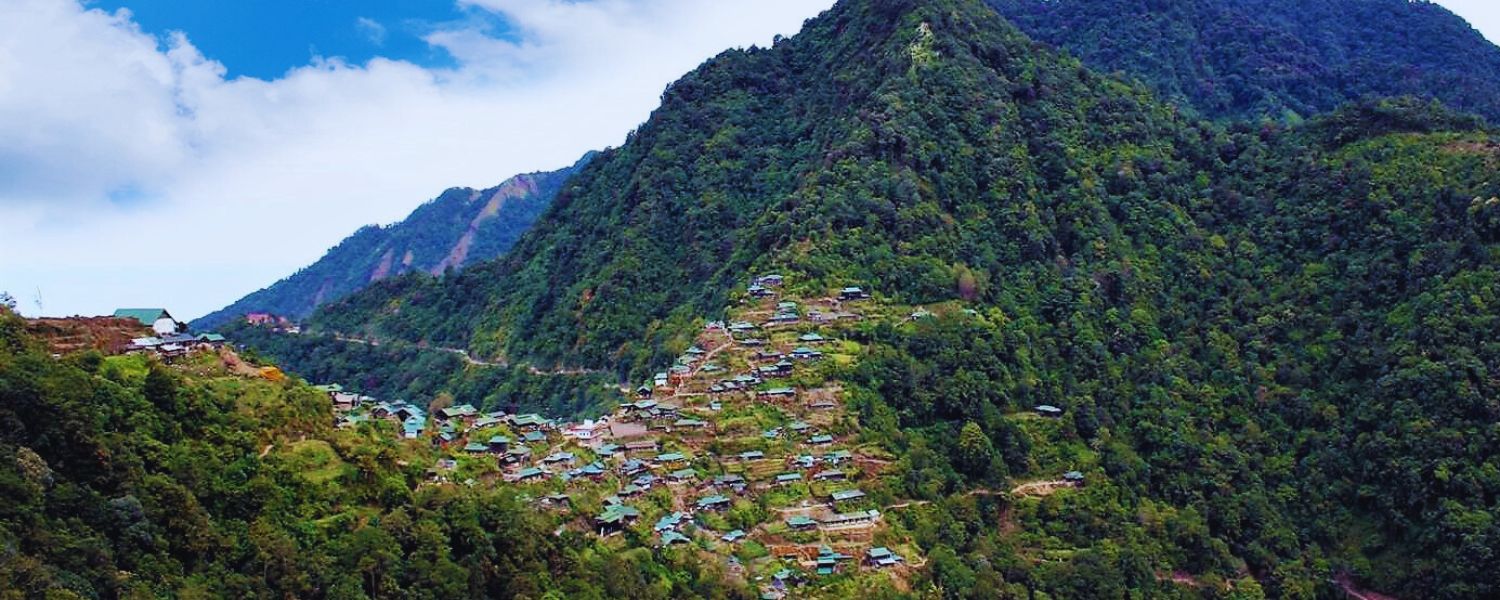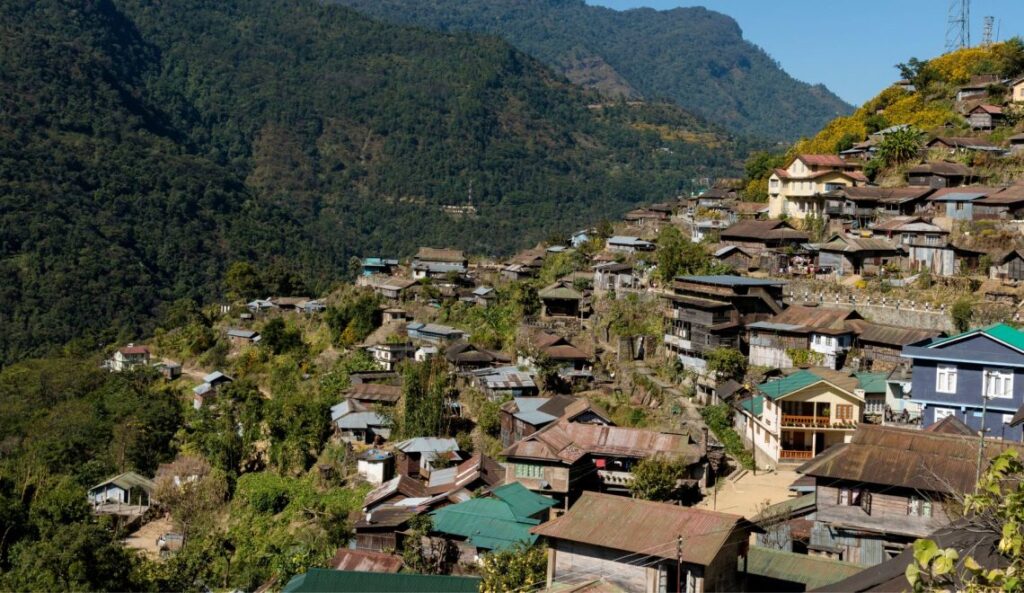Welcome to Nagaland Cities, a jewel in the northeastern landscapes of India, invites adventurers to uncover its unique blend of natural beauty, cultural richness, and urban vitality.
Beyond the serene villages that grace its terrain, Nagaland cities stand as captivating focal points, waiting to be unveiled.
In this expedition, we embark on a journey to explore these urban havens, where history intertwines seamlessly with the contemporary, and the symphony of diversity resonates through every street and corner.
1. Kohima

Kohima, the capital of Nagaland Cities, is a living testament to the state’s rich history and cultural heritage. Steeped in history, Kohima gained international recognition during World War II as the battleground for the Battle of Kohima, often called the “Stalingrad of the East.”
This fierce battle marked a turning point in halting the Japanese advance into India and was pivotal in shaping the war’s outcome.
The Kohima War Cemetery is a solemn tribute to the soldiers who sacrificed their lives during this battle. Beyond its wartime significance, Kohima is renowned for its vibrant festivals, showcasing the indigenous Naga traditions.
The Hornbill Festival, a yearly extravaganza, serves as a platform for preserving and celebrating Naga culture through dance, music, crafts, and culinary delights.
Kohima’s bustling markets, colonial-era churches, and panoramic views of the surrounding hills contribute to its unique allure.
2. Dimapur

However, Dimapur, the largest city in Nagaland, serves as the state’s commercial hub, seamlessly blending history with urban development. Dimapur was the ancient capital of the Kachari kingdom and an important trade center along the ancient trade route connecting India to Southeast Asia.
Today, this vibrant city is characterized by its bustling markets, modern infrastructure, and diverse population. The city’s historical significance is reflected in sites like the Kachari Ruins, which offer glimpses into its past.
Dimapur’s strategic location also makes it a gateway to Nagaland Cities and neighboring states. With its shopping arcades, eateries, and cultural events, Dimapur exudes a sense of dynamism while preserving its historical roots.
3. Mokokchung

Mokokchung, often called the cultural capital of Nagaland Cities, is nestled amid picturesque hills and lush greenery. This city is a testament to the rich heritage of the Ao Naga tribe. The town is dotted with intricately designed tribal huts and vibrant handicrafts, showcasing the artistic prowess of the Ao community.
Mokokchung’s history dates back to ancient times, and its residents take great pride in their age-old customs. The town is known for its festivals, with Moatsu and Tsungremmong being prominent examples, offering a glimpse into the Ao people’s traditional rituals, dances, and songs.
The town’s serene beauty and deep cultural roots make Mokokchung a must-visit destination for those seeking an immersive experience in Nagaland Cities cultural heritage.
4. Tuensang

Tuensang, located in the eastern part of Nagaland Cities, holds significant historical and cultural importance. The British administration established one of the initial areas during the colonial period. The town was once a vibrant trading hub due to its strategic location along the Indo-Myanmar border.
Tuensang is renowned as the cultural heartland of the Chang tribe, and the various aspects of life, from traditional attire to festivals, clearly reflect its rich heritage. The town received formal recognition in 1947, and since then, it has become a center for education and administration in the region.
Tuensang’s history closely connects with the history of Nagaland’s indigenous tribes. Exploring the town offers insight into the unique social fabric that characterizes the state.
5. Wokha

Wokha, situated in the western part of Nagaland Cities, has a history deeply intertwined with the Lotha tribe. The picturesque landscapes and serene surroundings define the town. Historically, people recognized Wokha for its agricultural prowess, showcasing terraced fields and lush greenery.
The region’s agriculture has been the backbone of the local economy, contributing to the town’s growth. The authorities officially established Wokha as a district headquarters in the early 1950s, marking its administrative significance.
The town celebrates the famous ‘Amur Falcon Festival,’ which highlights the region’s biodiversity and raises awareness about conservation efforts. With its vibrant culture and captivating natural beauty, Wokha stands as a testament to Nagaland’s historical and ecological heritage.
6. Zunheboto

Zunheboto, in the central part of Nagaland, stands out for its Naga heritage and distinct traditions. The town’s history goes back centuries and is a vital center for the Sumi tribe. Zunheboto’s history shows its role as a frontier town that protected the Naga territories from external invasions. The Sumi tribe’s warrior traditions are deeply ingrained in the region’s history.
The town gained prominence during the early 20th century, when British explorers and administrators began documenting the Naga way of life. Today, Zunheboto stands as a blend of traditional and modern influences, with festivals like the ‘Tuluni’ celebrating the region’s agricultural bounty. The town’s history and cultural heritage provide a fascinating window into the enduring spirit of the Naga people.
7. Phek

Phek, a captivating city in Nagaland, offers a fascinating glimpse into the historical tapestry of the region. Known for its rich cultural heritage and stunning landscapes, Phek stands as a testament to Nagaland Cities unique identity. The indigenous tribes have intricately interwoven their history with the city, having called this region home for centuries.
With its origins tracing back to ancient times, Phek has evolved into a vibrant urban center while retaining its deep-rooted traditions. The city of Phek has been a hub of cultural exchange, as various tribes have converged and interacted here over the years.
This convergence has given rise to a diverse array of traditions, languages, and artistic expressions, making Phek a melting pot of cultures. The historical significance of Phek is evident in its landmarks and monuments, which serve as tangible links to the past. These structures narrate tales of valor, unity, and resilience, handed down through generations.
8. Mon

Mon is a city that echoes the whispers of history. The narratives of Naga tribes and their unique social structures intertwine with its very existence. As one of the oldest inhabited areas in Nagaland, Mon has played a pivotal role in shaping the cultural and historical landscape of the region.
The city boasts intricately carved monuments and traditional wooden houses, reminding visitors of a bygone era. Mon’s history is characterized by the bravery and tenacity of its inhabitants. The city has been witness to various tribal conflicts and battles that have left their mark on the land.
The Angh’s (chiefs) residence, with its distinctive architecture and symbolic significance, adds another layer to Mon’s historical allure. Today, as modernity gradually encroaches upon its surroundings, Mon stands as a guardian of the past, safeguarding the legacies of its people for the generations to come.
9. Peren

Peren, a city that exudes an aura of resilience, is an embodiment of Nagaland’s history and heritage. Peren’s history weaves through the lives of the Zeliang and Kuki tribes, who have made this area their home in picturesque landscapes.
Tales of survival against adversity mark the city’s past as its inhabitants navigated through challenges to preserve their unique cultural practices and way of life. Peren’s historical significance is palpable in its traditions, festivals, and art forms. The city’s festivals, such as “Akpise,” reflect the deep connection between the people and the land.
The echoes of ancestral wisdom resonate in the folklore and oral traditions passed down through generations. Peren’s serene environment includes natural landmarks that hold significance for the indigenous communities, underscoring the deep connection between the people and their surroundings.
10. Kiphire

Kiphire stands as a testament to the state’s diverse cultural mosaic. The town’s history dates back to ancient times when Naga tribes inhabited the region. Kiphire was initially part of the Tuensang district before gaining district status in 2004.
Its historical significance lies in being a bridge between various Naga communities, each with its distinct customs and traditions. Kiphire’s strategic location has contributed to its historical evolution. Over the years, the town has been a meeting point for trade, culture, and social interactions among the Naga tribes.
This crossroads of cultures has led to a unique blend of traditions, visible in the town’s festivals, cuisine, and daily life. Kiphire’s history continues to shape its identity as a cultural hub, attracting curious travelers and scholars eager to explore its rich heritage.
11. Pfutsero

Perched amidst the hills of Nagaland, Pfutsero stands as a testament to the enduring heritage of the region. This charming town, nestled in the heart of the Phek district, boasts a history that stretches back through the ages.
The Chakhesang Naga tribe, known for their intricate woodwork and vibrant festivals, historically inhabited the region.
As one explores Pfutsero’s surroundings, remnants of ancient customs and traditions are visible, showcasing the Naga way of life. The town’s elevation lends it breathtaking panoramic views, and its history is as captivating as the vistas it offers.
Conclusion
As our expedition through Nagaland’s urban tapestry draws to a close, we uncover a narrative woven with threads of heritage, identity, and progress, encapsulating the true essence of this captivating region. These cities, each with its distinct persona, contribute to the vibrant mosaic of Nagaland’s cultural fabric.
From the ancient echoes of Pfutsero’s streets to the harmonious blend in Medziphema, these urban centers offer windows into the lives and stories of those who call them home.
As twilight paints the skyline of Kohima and the vibrant pulse of Dimapur’s markets comes alive, we stand witness to the concealed gems within Nagaland cities. More than geographical entities, these cities are living embodiments that recount stories of resilience, adaptation, and growth.
The soul of Nagaland’s urban existence lies in its ability to bridge the chasm between its storied past and its aspirations for the future, all while embracing the diverse tapestry that defines its present.
By embracing these urban revelations, we embrace the very spirit of Nagaland. In this land, cultures converge, history harmonizes with modernity, and the allure of the undiscovered urges us to delve deeper into its realms.










